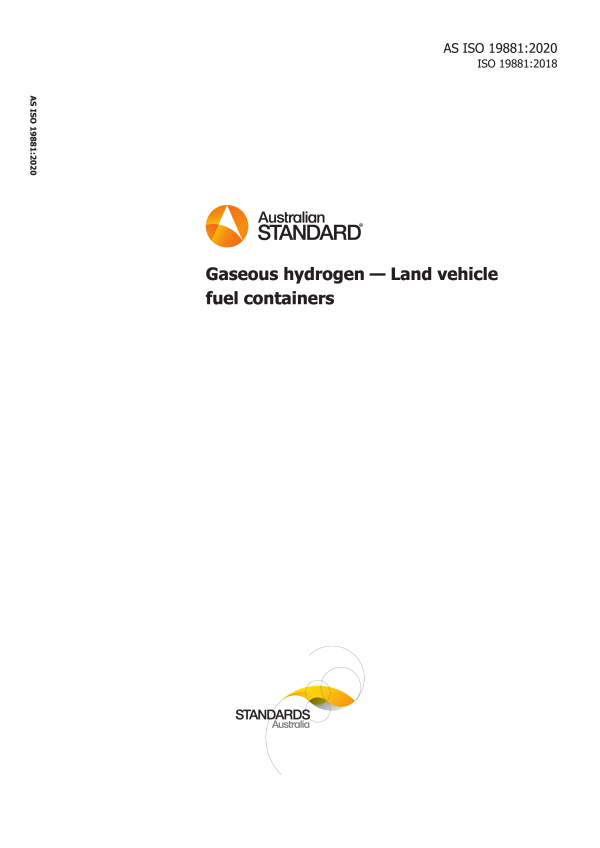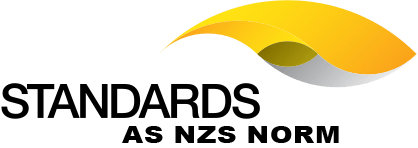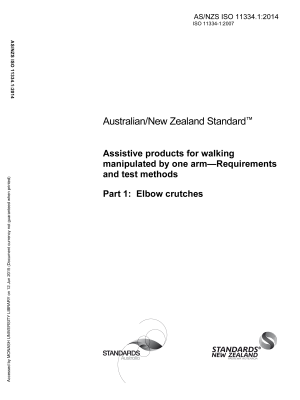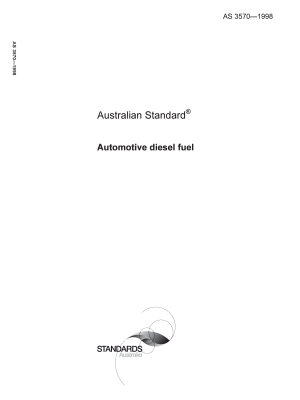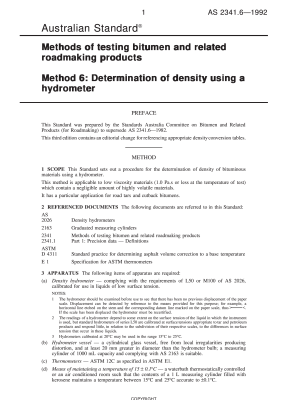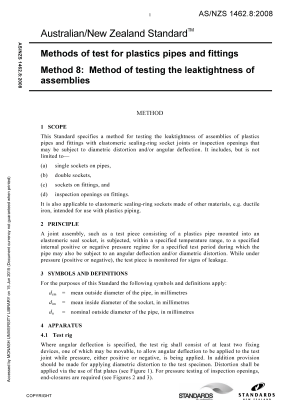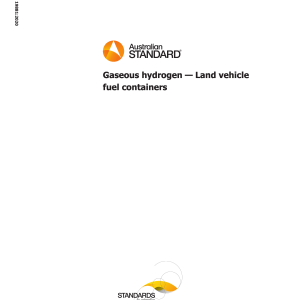Header
About this publication
Preface
Foreword
Introduction
1 Scope
2 Normative references
3 Terms and definitions
3.5
3.21
4 Service conditions
4.1 General
4.1.1 Standard service conditions
4.1.2 Category
4.1.3 Service life
4.1.4 Periodic in-service inspections
4.2 Pressures
4.2.1 Nominal working pressures
4.2.2 Maximum pressures
4.3 Maximum number of filling cycles
4.4 Temperature range
4.4.1 Settled gas temperatures
4.4.2 Container temperatures
4.4.3 Transient gas temperatures
4.4.4 Test temperatures
4.5 Gas composition
4.6 External surfaces
4.7 Installation requirements
5 Compliance
6 Material qualification tests and requirements
6.1 General
6.2 Material requirements
6.3 Metal containers and metal liners
6.3.1 Material properties
6.3.2 Impact test for steel
6.3.3 Tensile tests for metals
6.3.4 Sustained load cracking (SLC) test for aluminum alloys
6.3.5 Corrosion tests for aluminum alloys
6.4 Ultraviolet resistance of external coatings
6.5 Fibers
6.6 Resins
6.7 Nonmetallic liners (Type 4)
6.8 Bosses for Type 4 containers
7 Wall thickness
7.1 Type 1 containers
7.2 Liners for Type 2, Type 3, and Type 4 containers
7.3 Composite reinforcement for Type 2, Type 3, and Type 4 containers
7.3.1 Stress analysis
7.3.2 Stress ratios
7.3.3 Modified stress ratio test
7.3.4 Hybrid designs
7.4 External loads on containers
8 Threaded openings
9 Manufacture
9.1 General
9.2 Metal containers and metal liners
9.3 Nonmetallic liners
9.4 Composite containers with metallic liners
9.5 Composite containers with nonmetallic liners
9.6 Brazing
9.7 Welding
9.8 End closing by forming
9.9 Mounting and protection
9.10 Batch definitions
9.10.1
9.10.2
9.11 Design qualification tests
10 Production tests and examinations
10.1 General
10.2 Hydrostatic test
10.3 Leak test
11 Batch tests
11.1 General
11.2 Batch material tests
11.3 Coated containers
11.4 Burst test
11.4.1 Batch burst test
11.4.2 Periodic burst test
11.4.2.1
11.4.2.2
11.4.2.3
11.5 Cycle test
11.5.1 Batch cycle test
11.5.2 Periodic pressure cycling test
11.5.2.1
11.5.2.2
11.5.2.3
11.5.2.4
12 Rejected containers and liners
12.1 Physical test
12.2 Leak test
12.3 Hydrostatic test
12.4 Cycle test
12.5 Burst test
13 Pressure relief devices
14 Records of manufacture
15 Marking and dispatch
15.1 Markings
15.1.1 General
15.1.2 Marking information
15.2 Dispatch inspection
16 Quality assurance
17 Design qualification tests
17.1 General
17.2 Test requirements
17.3 Category A, B and C: design qualification tests
17.3.1 Test requirements
17.3.2 Ambient cycling test
17.3.2.1 Sampling
17.3.2.2 Procedure
17.3.2.3 Acceptable results
17.3.3 Environmental test
17.3.3.1 Sampling
17.3.3.2 Procedure
17.3.3.2.1 General
17.3.3.2.2 Pendulum impact preconditioning
17.3.3.2.3 Environmental fluids for exposure
17.3.3.2.4 Pressure cycle and pressure hold
17.3.3.2.5 Acceptable results
17.3.4 Extreme temperature cycling test
17.3.4.1 Sampling
17.3.4.2 Procedure
17.3.4.3 Acceptable results
17.3.5 Hydrostatic burst test
17.3.5.1 Sampling
17.3.5.2 Procedure
17.3.5.3 Acceptable results
17.3.6 Flaw tolerance test
17.3.6.1 Sampling
17.3.6.2 Procedure
17.3.6.3 Acceptable results
17.3.7 Drop test
17.3.7.1 Sampling
17.3.7.2 Procedure
17.3.7.3 Acceptable results
17.3.8 Fire test
17.3.8.1 Sampling
17.3.8.2 Procedure
17.3.8.2.1 General
17.3.8.2.2 Container set-up
17.3.8.2.3 Fire source
17.3.8.2.4 Test requirements
17.3.8.3 Acceptable results
17.3.9 Accelerated stress rupture test
17.3.9.1 Sampling
17.3.9.2 Procedure
17.3.9.3 Acceptable results
17.3.10 High strain rate impact test
17.3.10.1 Sampling
17.3.10.2 Procedure
17.3.10.3 Acceptable results
17.3.11 Permeation test
17.3.11.1 Sampling
17.3.11.2 Procedure
17.3.11.3 Acceptable results
17.3.12 Boss torque test
17.3.12.1 Sampling
17.3.12.2 Procedure
17.3.12.3 Acceptable results
17.3.13 Hydrogen gas cycling test
17.3.13.1 Sampling
17.3.13.2 Procedure
17.3.13.3 Acceptable results
17.3.14 Leak before break test
17.3.14.1 Sampling
17.3.14.2 Procedure
17.3.14.3 Acceptable results
17.4 Change of design
17.5 Category B: design qualification tests
17.5.1 General test requirements
17.5.2 Ambient cycling test
17.5.3 Hydrostatic burst test
17.5.4 Container test for performance durability
17.5.4.1 Test requirements
17.5.4.2 Proof pressure test
17.5.4.3 Drop test
17.5.4.4 Surface damage test
17.5.4.5 Chemical exposure and ambient pressure cycling
17.5.4.6 High temperature static pressure test
17.5.4.7 Extreme temperature pressure cycling test
17.5.4.8 Hydraulic residual pressure test
17.5.4.9 Residual burst test
17.5.5 Container test for expected on-road performance
17.6 Category C: design qualification conditions and limitations
17.6.1 Marking information
17.6.2 Material tests for steel containers and liners
17.6.3 Material tests for aluminum alloy containers and liners
17.7 Qualification test results
Annex A
A.1 Methods for external visual inspection of compressed hydrogen gas vehicle (HGV) fuel containers and their installations
A.2 Conditions requiring immediate inspections
Annex B
B.1 Non-destructive examination (NDE) defect size determination
B.2 NDE defect size by engineering critical assessment
B.3 NDE defect size by flawed container cycling
Annex C
C.1 Record of manufacture of compressed hydrogen vehicle fuel containers
C.2 Record of chemical analysis of material for metallic containers, liners and bosses
C.3 Record of mechanical properties of material for metallic containers, liners, and bosses
Annex D
D.1 Category A, B and C design qualification tests
D.1.1 Ambient cycling test
D.1.2 Environmental test
D.1.3 Pendulum impact preconditioning
D.1.4 Environmental fluids for exposure
D.1.4.1 General
D.1.4.2 Pressure cycle and pressure hold
D.1.4.3 Acceptable results
D.1.5 Extreme temperature cycling test
D.1.6 Flaw tolerance test
D.1.7 Drop test
D.1.8 Fire test
D.1.9 Accelerated stress rupture test
D.1.10 High strain rate impact test
D.1.11 Permeation test
D.1.12 Boss torque test
D.1.13 Hydrogen gas cycling test
D.1.14 Leak before break test
D.2 Category B design qualification tests
D.3 Category A container fill cycles
D.4 Category B container fill cycles
D.5 Category C container fill cycles
Bibliography
